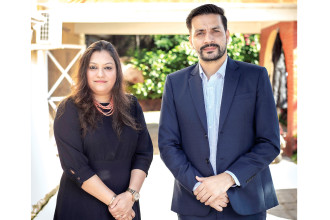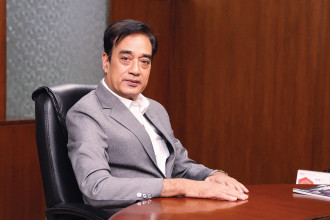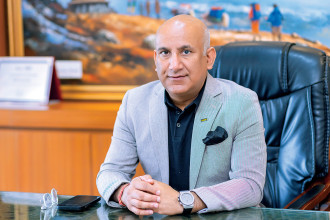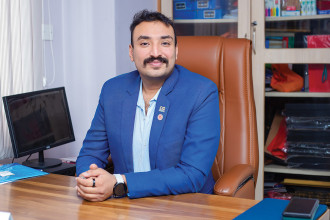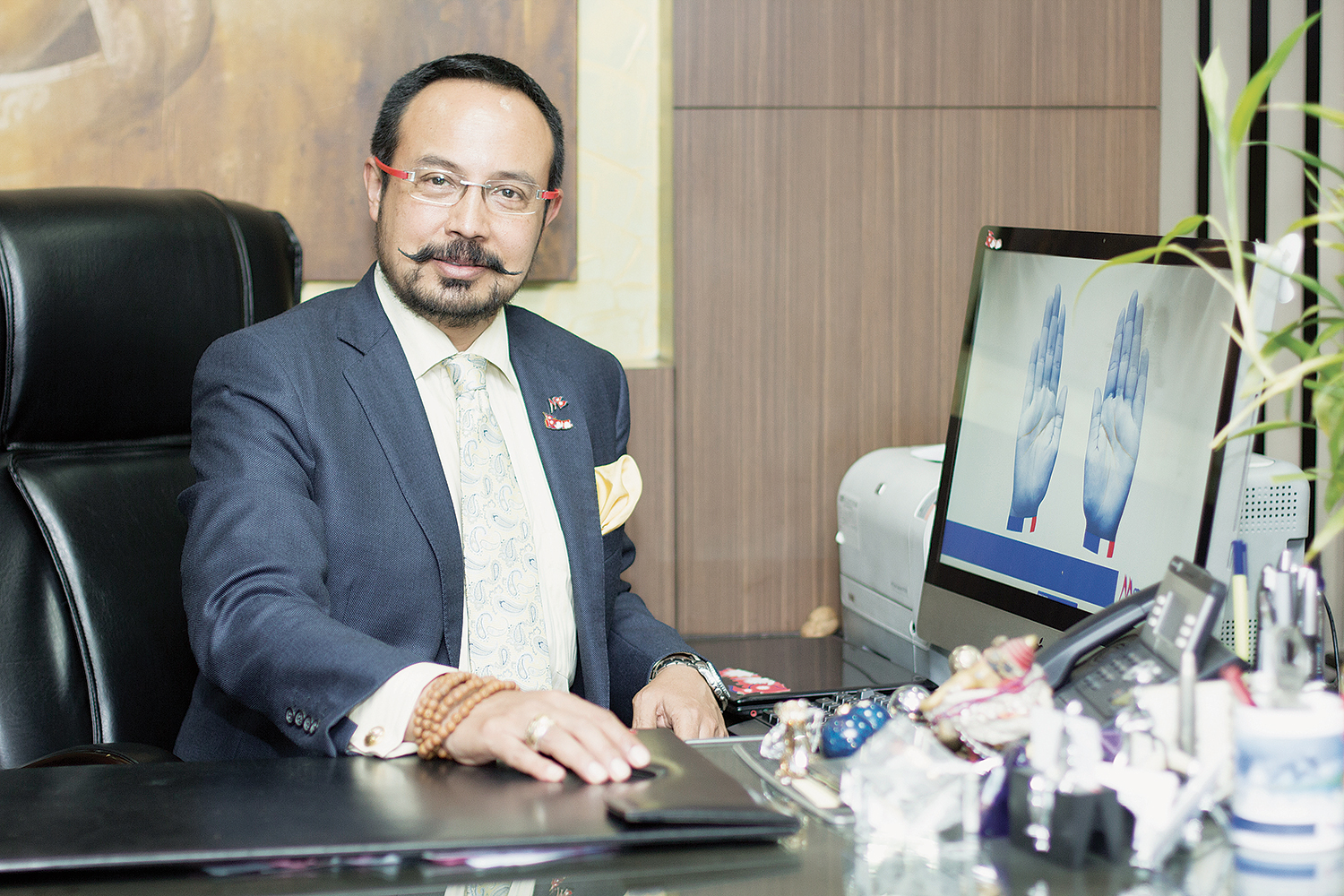
Anil Keshary Shah, CEO of Mega Bank is a well recognized corporate entity who started his banking career as a trainee in 1991 with Standard Chartered. His career advanced rapidly to become the General Manager of the bank in 2004. He then moved to Nabil Bank to become the first Nepali CEO of a joint venture bank in Nepal. And today continues his career path with Mega Bank.
High ambition, positive attitude, dedication, and commitment are key attributes that have kept him at the top of his game. In November, Shah was elected as President of the Nepal Bankers Association (NBA).
Ashok Thapa from Business 360º caught up with Shah to learn about his vision for NBA during his term and the current situation of the banking sector among other issues.
As the newly elected President of Nepal Bankers Association, could you give us an overview of the current situation of the sector?
The banking sector of Nepal has come a long way since the first joint venture bank, Nepal Arab Bank and the journey so far has been pretty interesting - interesting in a sense that there have been lots of challenges, opportunities, highs and lows. Nepal has gone through a lot of transformation in social, political, educational and almost in all spheres, and the financial sector has not been untouched with the phenomenon happening around. Talking about the short term events, there are issues like demonitisation of Indian currency, liquidity crunch and ATM frauds, among others. In the medium to long term, the fact that we have now our own constitution which has demarked the country into seven provinces, and we will now have seven Chief Ministers in each of the provinces. What will be their economic vision, how will they economically transform the provinces, and what role does the banking sector have to play in the economic transformation process of those provinces? The questions still are unanswered. So there are interesting things that the banking sector is facing right now.
What I am confident is that whatever the future brings, we will not only be able to cope with the challenges but also capitalise on the opportunities and do more. The confidence I have in this is because we have over 25,000 Nepalis working in the banking sector at present. And these 25,000 are some of the best among the Nepali youths. As long as we are able to attract the best among our youths in the banking sector, we will continue to strive to be one of the best sectors in Nepal.
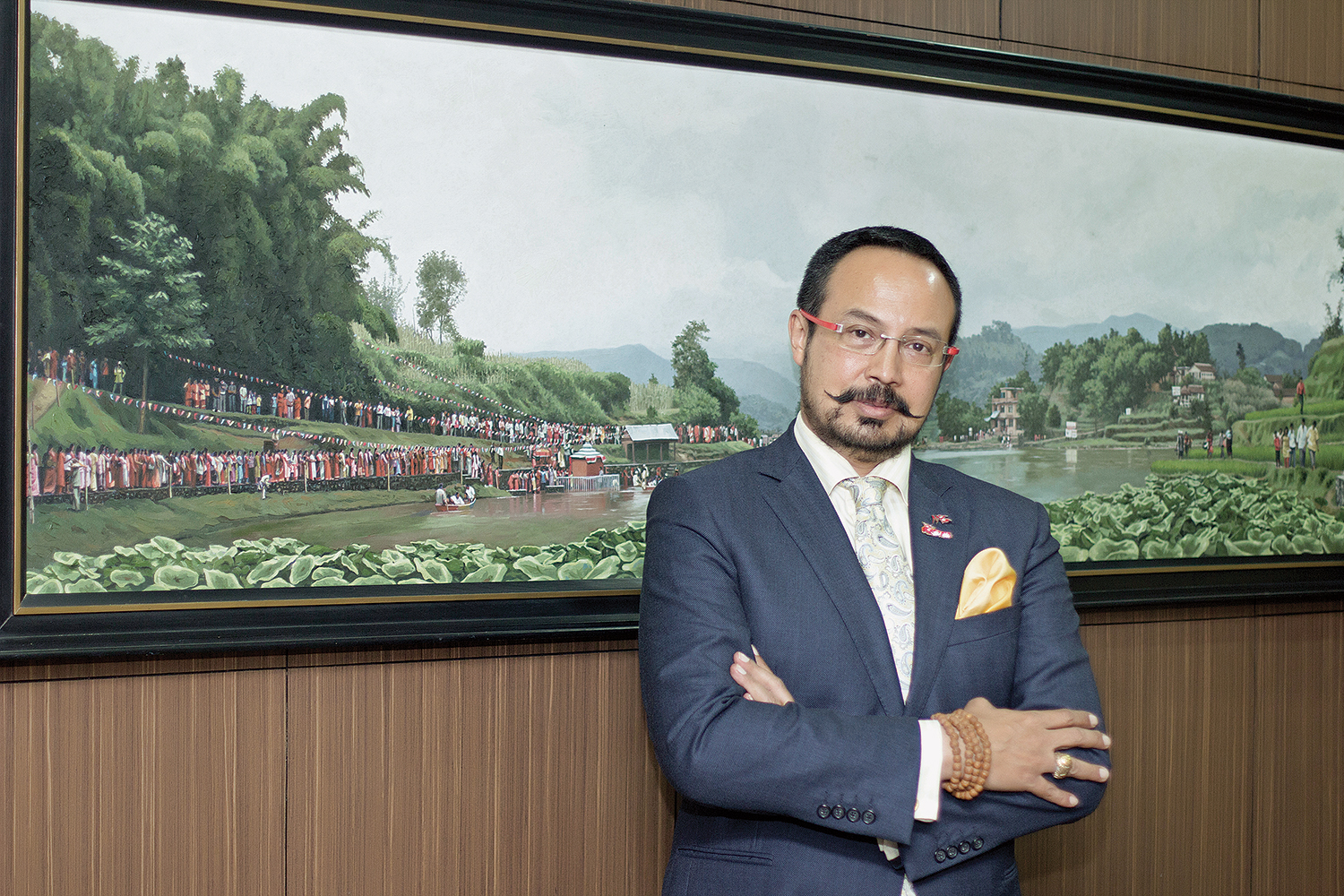
The banking sector has come a long way post liberalisation in the the 90s, what next?
The next step of the banks would be the adoption and utilisation of technology to enhance the financial inclusion of Nepalis. Even today only around 40 percent of Nepalis have access to banking which means 60% are still beyond the network. Now we have to see how we are able to pull that 60% within the periphery of banking system. And to do that it’s not about opening up branches in every village which is not possible due to geographical situation like ours. So we have to use technology whether it is branchless banking, tab banking, mobile banking or internet banking. But we have to make it feasible for the Nepali population at large to be banked. I think the biggest opportunity in this area is remittance. Right now remittance is one of the main pillars of our economy. Millions of Nepalis are working abroad and now we need to open bank accounts for them. The biggest challenge they face is that they live and work in one of the most hostile countries in the world, and they keep sending money back as they can’t feel secure retaining money with them. But when they come back to Nepal after three years, they see the money has not been invested or kept safe and there is no money left. So, after a few months, there is no option for them but to go back again to foreign jobs. We want to give them solutions so that they won’t face the same problem over and over again. We want them to open accounts. Most banks now have internet banking. Foreign workers will send money to their own account. Their spouse and their parents can open accounts as well. Some money can be used by their family for livelihood and the rest can earn interest in their account so that whenever they come back home, there is money that they can be in-charge of. Innovative initiatives like these are how we can penetrate the market and give more financial inclusion.
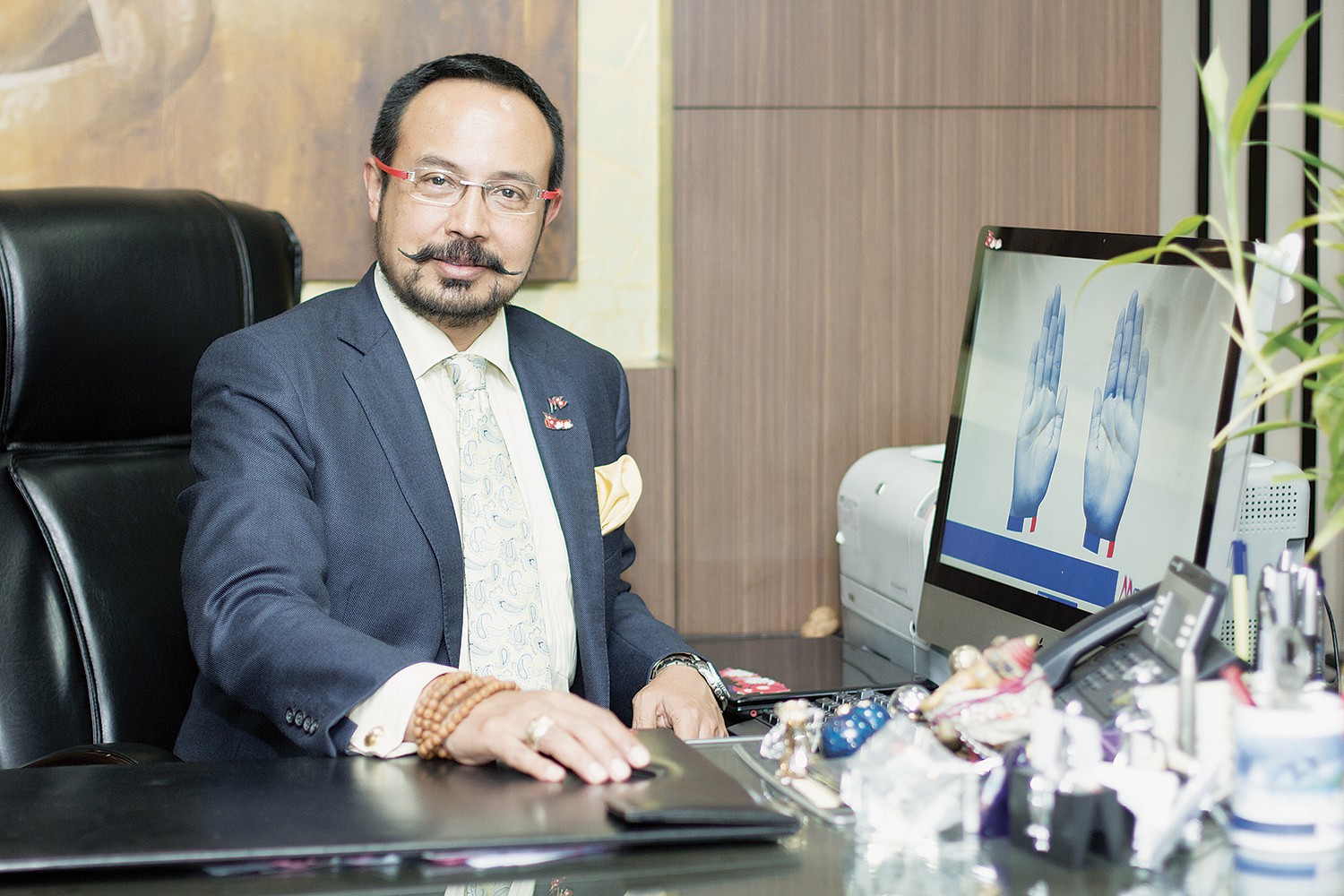
Towards remittance, banks are yet unable to offer schemes that can be lucrative investment. Your thoughts…
I have a different opinion in this regard. Whatever money comes in Nepal comes not from knowledge workers. The knowledge workers are based in the US, UK and elsewhere, who have been taking permanent citizenship in those destinations. They purchase house and land and sell their property here in Nepal and want their whole family to go with them. They are not sending money home. People who are sending home money are at the bottom of the pyramid. They are the most deprived people of Nepal who have nothing here but have gone for foreign jobs to ensure their livelihoods so that their families can fulfill their basic necessities. When they go for foreign jobs, neither banks nor the government provides them with any help. They have to sell land, their mothers’ gold, pay bribes and what not to go wherever they do. And they earn money and send it back here. And now, what we are saying is take some of the money and invest it in hydro projects so that we can have electricity or build better highways so that we can ride our cars faster? I am completely against it!
It’s okay that they are using their money to raise their livelihood from abject poverty to a decent level. They are building nice houses, their children are wearing nice clothes and getting better education. They are investing in health and they are keeping little bit of money so that if their parents fall sick, they can invest in medical treatment. They are buying fridge, TV or motorcycles. We can’t see them make their lives better and instead we are saying we have to use that money in projects that will ease the lives of those who are already prosperous and live here. I think it is completely wrong. I think we should let the people raise the quality of their life to a certain level. After they do that, if we provide bank accounts to them, they will themselves save money, and when they are back they will use the money to open a little tea shop or motorcycle repair shop or begin some venture like a grocery store or small agriculture or cattle farming so that they don’t have to go back. If we say to them that we will use your money and give you shares, they will have nothing to do here when they are back and will again go back to their previous jobs. So we have to stop thinking from this rich man, urban perspective. We don’t have that right.
What are you the main areas of your focus during your tenure as NBA President?
As President of any association, there are always the short term and medium to long term issues to address. Like liquidity, ATM fraud, INR 500 and 1,000 issue, etc are short term issues and we have to deal with them as and when they arise. But in the medium to long term, I think these two years term of mine is at a very critical time. The critical issue that we will be dealing with is the issue associated with the provincial provision and its economics, for example, how do seven provinces develop their economic strategy and vision. Because each province will have their own Chief and Finance Minister, they will have Cabinet in each province. Each province will have their own financial issues.
As an association, each of the banks rather than running around their own policy and objectives, we have to see how we can have common vision to take to the provincial government and say this is what we want to do. We have to say this is your vision and this is ours, and this is how we can help you in meeting your vision and let us work together. I think during my tenure as President, this will be the biggest challenge and biggest opportunity as well. And this is the major thing I would be working on.
Do you think banks have done enough to help scale mega projects, or have they been happy limited to serving auto and housing loans?
Banks also have realised that in order to achieve sustainable economic growth, we have to uplift the living standard of mass citizens. In the past, banks were focused on banking the big industries, big businesses and the big businessmen. Money was taken from the mass Nepali public in the form of deposits and a handful of people were given loans who ran big industries. Common people didn’t benefit from the banking sector in any way other than getting interest on deposits. But now you can see the difference. At present, more and more Nepalis have been brought within the banking channel. People who did not have vehicles are riding a motorcycle and motorcycle owners have shifted to cars. People who had no place to live have been able to buy a small piece of land and build their own home. Their living standards have come up owing to the access of bank financing. When I, as a banker, look at it, I find it more productive than giving a bunch of people all the loans that the banks have and build industries and so on and so forth.
We have to do both. We have to finance big projects and we also have to finance consumers and common people, that too not only in the urban but also in rural areas. What we need to do from the banking sector is, we have to enhance our capacity, for instance the paid up capital is being raised to Rs 8 billion. This will give us more capacity to finance bigger projects. Along with that, we also have to enhance our technical skills. We also have to, at the same time, look at the bottom of the pyramid and see how we can ensure financial inclusion of more and more people.
Is there a sustainable solution to the liquidity issue?
I think the main problem is there is no depth in the liquidity market. If there was a depth, such would not be the case. The reason that it happens is not logical and it’s not healthy for the economy and the market. It’s because till now the biggest spender in the market is the Government of Nepal.
Unfortunately, for the last many years, the government has not been able to spend as per its budget and this year too the spending is even less. And because the liquidity that should have come back in the market, because government picks up liquidity from the market in the form of excise, VAT and other taxes but it needs to come back through the spending in roads, highways, schools and others. But when it does not spend, the liquidity dries up in the market. And that is what is happening. But at the end of the fiscal year, government spends a lot of money. And there is too much liquidity in the market. And everything repeats again. Therefore the government has to have a planned and systematic spending strategy which would help maintain liquidity throughout the fiscal year.
The paid up capital of the commercial banks is to be raised to Rs 8 billion by the end of this fiscal as per the directives of NRB, how does this effect the banks?
Lots of banks have already completed mergers and acquisitions. Many banks have decided that they won’t go for merger and acquisition but to issue right shares. So banks are pretty much on track to enhance their paid up capital to Rs 8 billion by this end of this fiscal.
.
As a banker, how do you respond to the Indian Government‘s recent demonetisation of INR 500 and INR 1,000 notes? Does this pose any threat to Nepal‘s banking and economic sector?
First of all, which economy? If you are talking about the formal economy, there is no impact at all. For example when Nepal Rastra Bank asked us how much banned currency do we have in the banking sector, we said we don’t even have Rs 35 million and that’s the formal sector status. Until the day that the Indian government announced demonitisation, I, all the CEOs and Rastra Bank were receiving a lot of calls saying ‘There is not enough Indian currency in the market and that Nepalis are having tough time when they go to India and to trade, so you need to bring more Indian rupees and put it in the market.’ We thought there was no Indian rupees in the market. But right after demonitisation, we got calls and people said ‘We have so much Indian rupees, what are we going to do? The economy is not going to sustain this way, you have to do something.’ Now which version of the thing should we trust?
Towards the informal economy side, being a Nepali I am proud of my own currency as much as I am proud of Buddha and the Everest. I trust my currency and I save in my own currency. But when you hold another country’s money in huge amounts and all of a sudden there is this unfavourable policy, then I think you should go to that very country and ask for a solution. That’s my recommendation. Because we can’t solve that problem as it’s not our money. We can’t help unless the Reserve Bank of Indian asks us to take the money from the public and they ensure its convertibility. Otherwise, why had you trusted another country and its economy previously? We are hearing that the whole far western region had IC economy. Why is this? Isn’t this against the law of the land? Holding that much of money is not legal. It had been clearly said that an individual could hold IC worth 25,000 when one had to travel to India, but also had equally been clearly said that come back and change it to NC. Who had told them to hold on to the Indian currency? If you have pride in your country, you also have to have pride in the Nepali currency.



